Les rétrocaveuses et les excavatrices sont deux pièces essentielles de machinerie lourde utilisées dans les projets de construction et d’excavation. Les deux jouent un rôle essentiel dans le creusement, le creusement de tranchées et le déplacement de matériaux, mais ils présentent des caractéristiques distinctes qui les rendent adaptés à différentes tâches. Dans cet article, nous comparerons les rétrocaveuses et les excavatrices, vous aidant ainsi à prendre une décision éclairée lors du choix de l'équipement adapté à vos besoins spécifiques.
Understanding Backhoes
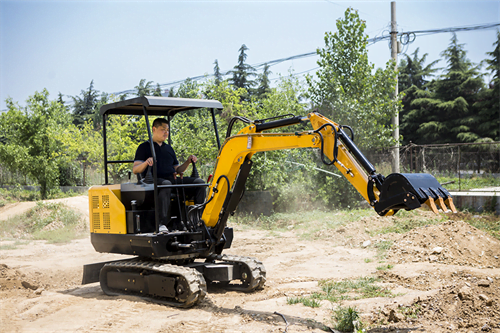
Backhoes are versatile machines that combine the capabilities of a tractor loader and an excavator. They have a digging bucket on the back and a loader bucket in the front. This unique design allows them to perform a wide range of tasks, from digging trenches to loading and transporting materials.
The primary advantage of backhoes is their versatility. They can efficiently switch between digging and loading functions, making them ideal for projects that require both tasks. For example, on a construction site, a backhoe can dig a trench and then quickly switch to loading a dump truck with the excavated material.
Backhoes are known for their exceptional maneuverability, especially in tight spaces. This makes them valuable for small to medium-sized projects or projects in confined areas where larger equipment might struggle to operate effectively.
The loader bucket in the front of a backhoe allows for easy loading of materials like soil, gravel, or construction debris. This makes backhoes a go-to choice for landscaping and general construction work, where materials need to be moved from one place to another.
The backhoe’s compact size and relatively lighter weight also make them suitable for transportation, so they can be easily moved from one job site to another. This mobility is a significant advantage, especially for contractors who need to use the equipment on multiple projects.
Understanding Excavators
Excavators are heavy-duty machines designed primarily for digging and excavation tasks. They have a distinct design characterized by a rotating cab and a hydraulic arm with a digging bucket at the end. This design provides them with exceptional precision and depth, making them ideal for specific construction and excavation projects.
The primary strength of excavators lies in their digging capabilities. These machines can dig deeper and with greater precision than most other types of heavy equipment. Their hydraulic arms and versatile attachments make them indispensable for tasks like trenching, digging foundations, and excavating large volumes of earth.
Excavators are particularly well-suited for tasks that require digging deep holes or trenches. Their long reach and powerful hydraulic systems enable them to reach areas that might be challenging for other machinery. This precision is valuable in situations where accuracy and depth are crucial, such as when preparing foundations for buildings.
The rotating cab of an excavator allows the operator to easily swing the machine 360 degrees, providing them with a complete view of the work area. This flexibility enhances the operator’s ability to work in confined spaces and around obstacles, increasing productivity and safety on the job site.
However, due to their size and weight, excavators are typically less maneuverable than backhoes, making them better suited for larger-scale construction and excavation projects. They may not be the best choice for smaller job sites with limited space.
Backhoe vs. Excavator:Differences in Design
One of the most noticeable distinctions between backhoes and excavators lies in their design. These differences play a significant role in determining which machine is best suited for specific construction or excavation tasks.
Backhoes are compact and versatile machines that incorporate a tractor loader in the front and an excavator in the back. They typically have a smaller footprint and are known for their maneuverability. This design allows them to easily navigate in tight spaces and work efficiently in areas where larger equipment might struggle to operate. The loader bucket in the front and the digging bucket in the back make backhoes versatile tools that can handle multiple tasks on a construction site.
In contrast, excavators have a more specialized design. They consist of a rotating cab and a hydraulic arm with a digging bucket at the end. The excavator’s design provides it with more power, reach, and digging depth compared to backhoes. While this design offers exceptional precision and depth for excavation tasks, it results in a larger and heavier machine, making excavators less maneuverable in confined spaces.
The choice between a backhoe and an excavator often comes down to the specific needs of a project. Backhoes are preferred for their versatility and compact design, making them suitable for smaller to medium-sized tasks. Excavators, with their specialized design, excel in large-scale excavation projects where power and depth are paramount.
Versatility and Use Cases
When considering whether to use a backhoe or an excavator for a particular project, it’s crucial to understand their versatility and the range of use cases they can effectively address.
Rétrocaveuses are known for their versatility. These machines are like the Swiss Army knives of construction equipment. They can handle a wide array of tasks, thanks to their dual capabilities of digging and loading. Some common use cases for backhoes include:
- Creusement de tranchées: Backhoes are excellent for digging trenches, whether for utility lines, drainage systems, or foundation work. Their compact size and maneuverability make them ideal for this task.
- Chargement: Backhoes can load materials like soil, gravel, or debris into trucks, making them valuable on construction sites where material handling is essential.
- Excavation: For smaller excavation tasks, backhoes are up to the challenge. They can dig holes, pits, and small foundations efficiently.
- Aménagement paysager: Backhoes are often used in landscaping projects for tasks like digging holes for trees or creating small ponds.
- Light Grading: Backhoes can also be used for light grading work to level the ground or create slopes.
Excavatrices, on the other hand, are more specialized and excel in specific use cases that require precision and power:
- Deep Excavations: When you need to dig deep foundations, trenches, or holes, excavators are the go-to choice. Their long reach and depth capabilities make them ideal for these tasks.
- Démolition: Excavators equipped with attachments like hydraulic breakers are used in demolition projects to break down structures.
- Heavy-duty Excavations: Large-scale earthmoving projects, such as mining or quarrying, often rely on excavators due to their power and efficiency.
- Travaux d'utilité publique: Excavators are used for tasks like digging utility line trenches or uncovering buried infrastructure.
- Foundation Work: When precision is crucial for laying foundations, excavators provide the accuracy required.
Performance et puissance
Performance and power are critical factors to consider when choosing between a backhoe and an excavator for your construction or excavation project. These machines differ significantly in terms of their capabilities and the tasks they can efficiently perform.
Rétrocaveuses, while versatile, are not as powerful as excavators when it comes to sheer digging force. However, their performance is more than adequate for a wide range of construction tasks. Here’s what you need to know about their performance and power:
- Profondeur de creusement: Backhoes can typically dig to depths ranging from 10 to 16 feet, which is sufficient for many projects, including small foundations and trenches.
- Capacité de levage: Backhoes have a moderate lifting capacity, allowing them to handle materials and loads commonly encountered on construction sites. They can easily load trucks with soil, gravel, or debris.
- Speed and Efficiency: Backhoes are known for their efficiency in switching between digging and loading functions, making them productive machines for various construction tasks.
Excavatrices, on the other hand, are designed for heavy-duty digging and excavation work. They offer superior performance and power in the following ways:
- Profondeur de creusement: Excavators can reach impressive depths, often exceeding 20 feet, making them the choice for projects that require digging deep foundations or trenches.
- Capacité de levage: Excavators have a significantly higher lifting capacity than backhoes, allowing them to handle more massive loads and materials.
- Digging Force: The hydraulic systems of excavators provide them with substantial digging force, enabling them to break through tough soils and rocks with ease.
- Speed and Precision: Excavators offer precision and control, allowing operators to perform intricate digging tasks with accuracy.
Creuser la profondeur et la portée
When it comes to excavation equipment, one of the crucial factors to consider is the machine’s digging depth and reach. Both backhoes and excavators have distinct capabilities in this regard, which can significantly impact their suitability for different projects.
Rétrocaveuses are versatile machines that offer moderate digging depth and reach. Here’s what you need to know about their capabilities:
- Profondeur de creusement: Backhoes typically have a digging depth ranging from 10 to 16 feet. This depth is suitable for a wide variety of construction and excavation tasks, including digging trenches, foundations, and utility line channels.
- Atteindre: While not as extensive as that of excavators, backhoes provide a reasonable reach for a compact machine. This makes them versatile in handling tasks that require a combination of digging and material handling.
- Maniabilité: Backhoes’ compact design and moderate reach make them highly maneuverable in confined spaces and smaller job sites, where a larger excavator might struggle to operate effectively.
Excavatrices, on the other hand, are specialized machines designed for deep excavation work. Here’s how they excel in terms of digging depth and reach:
- Profondeur de creusement: Excavators are capable of reaching impressive digging depths that often exceed 20 feet. This makes them the ideal choice for projects that require deep foundations, deep trenches, and extensive excavation.
- Atteindre: Excavators also have an extended reach, thanks to their long hydraulic arms. This reach allows them to work efficiently in areas where access may be limited, or where precision and depth are essential.
- Précision: The ability to precisely control the excavator’s arm and bucket, even at considerable reach and depth, makes them invaluable for tasks that demand accuracy and control.
Maniabilité
The maneuverability of construction equipment is a vital aspect to consider when choosing between a backhoe and an excavator. The ability to navigate efficiently on the job site, especially in confined or tight spaces, can greatly impact the success and efficiency of a project.
Rétrocaveuses are renowned for their exceptional maneuverability. Here’s what you need to know about their maneuvering capabilities:
- Conception compacte: Backhoes are designed to be relatively compact, with a smaller footprint compared to excavators. This design allows them to access and work in confined spaces, making them well-suited for urban construction sites and smaller job locations.
- Tight Turns: Backhoes can execute tight turns and operate in areas where larger equipment might struggle to navigate. This agility is particularly valuable when working in urban environments or on construction sites with limited space.
- Versatility in Movement: The design of backhoes allows for versatility in movement. They can easily switch between forward and reverse motions, as well as perform 360-degree turns, providing operators with excellent control.
Excavatrices, while powerful, typically have limitations in terms of maneuverability due to their larger size and specialized design. Here’s what you need to know about their maneuvering capabilities:
- Taille et poids: Excavators are bulkier and heavier machines compared to backhoes. This extra size and weight can limit their ability to operate in tight or restricted spaces.
- Limited Turning Radius: Excavators may have a wider turning radius compared to backhoes, which can make them less agile when navigating around obstacles or within cramped work areas.
- Operator Visibility: The rotating cab of an excavator does offer excellent visibility around the work area, but it can sometimes pose challenges when working in very tight spaces, as the operator must be mindful of the rotating motion.
Pièces jointes et accessoires
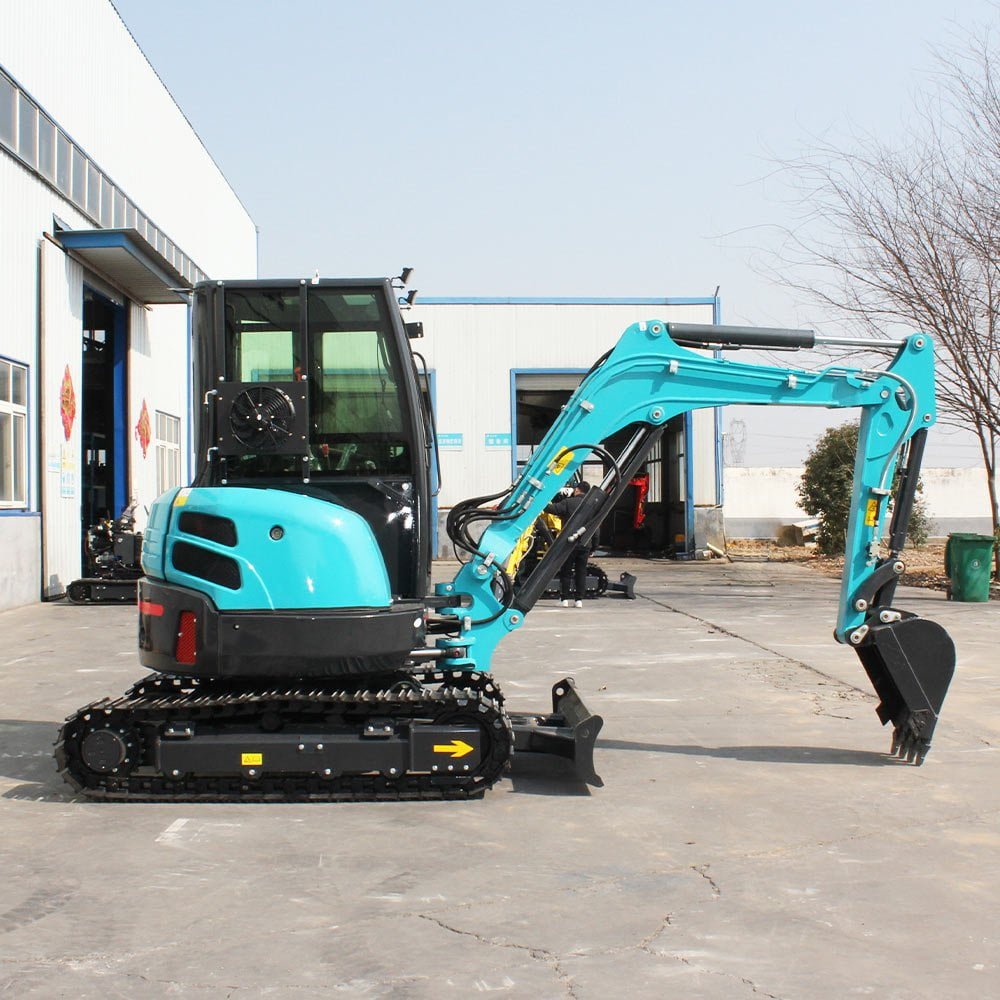
Both backhoes and excavators can be equipped with a variety of attachments and accessories to enhance their functionality and adapt to specific tasks. These additional tools make these machines even more versatile and useful in various construction and excavation scenarios.
Rétrocaveuses can be fitted with several attachments, expanding their range of capabilities. Here are some common attachments used with backhoes:
- Tarières: Auger attachments are used for drilling holes in the ground, making them valuable for tasks like setting fence posts or installing utility poles.
- Hammers: Hydraulic hammers can be attached to break through hard surfaces, such as concrete or rock. They are useful for demolition or excavation in tough terrains.
- Thumbs: Thumbs are gripping attachments that allow backhoes to grasp and handle irregularly shaped objects, such as tree stumps or large rocks.
- Grappins: Grapple attachments are handy for picking up and moving loose materials like logs, branches, or debris on construction sites.
- Tilt Rotators: These attachments provide a rotating function for the bucket, allowing for more precise control and efficient digging.
Excavatrices are also versatile when it comes to attachments, and they are often fitted with specialized tools to meet specific requirements. Here are some common attachments used with excavators:
- Marteaux hydrauliques: Excavators can be equipped with hydraulic breakers to break down structures, rocks, or concrete during demolition projects.
- Bucket Sizes: Excavators can use buckets of various sizes, depending on the task at hand. Smaller buckets are ideal for precision work, while larger ones are used for heavy-duty digging.
- Ripeurs: Rippers are attachments that help excavators break up compacted soil, asphalt, or rocks, preparing the ground for further excavation or construction work.
- Grading Blades: Grading blades allow for precise leveling of the ground, which is essential for creating even surfaces in construction projects.
- Shears: Excavator-mounted shears are used for cutting through metal or other materials, making them essential for recycling or cutting through debris.
Coûts de maintenance et d’exploitation
Considering the long-term expenses associated with maintaining and operating heavy equipment like backhoes and excavators is a critical aspect of choosing the right machine for your construction or excavation project.
Rétrocaveuses are generally easier on the wallet when it comes to both maintenance and operating costs. Here’s why:
- Entretien: Backhoes are relatively simple machines in terms of design. They have fewer components and hydraulic systems compared to excavators. This simplicity makes maintenance more straightforward and less costly. Routine maintenance tasks, such as oil changes, filter replacements, and inspections, are easier to perform and typically incur lower labor and parts expenses.
- La consommation de carburant: Backhoes are generally more fuel-efficient, especially in smaller to medium-sized projects. Their compact size and versatile design mean they consume less fuel per hour of operation, resulting in cost savings in the long run.
- Disponibilité des pièces: Parts for backhoes are widely available and tend to be less expensive compared to those for specialized machinery like excavators. This makes it easier and more cost-effective to source and replace components as needed.
Excavatrices, while powerful, tend to have higher maintenance and operating costs due to their complexity and size. Here’s what you should know about their expenses:
- Entretien: Excavators have more intricate hydraulic systems and components. This complexity can result in more extensive maintenance requirements and higher labor and parts costs. Maintenance tasks often demand more technical expertise and time.
- Consommation de carburant: Excavators typically consume more fuel per hour of operation, primarily due to their larger engines and greater power requirements. This higher fuel consumption can lead to increased operating costs over time.
- Specialized Parts: Excavators use specialized components and attachments, which can be more expensive to purchase and maintain. Finding these parts might also be more challenging in some regions, potentially causing delays and additional expenses.
Location ou achat
Deciding whether to rent or purchase a backhoe or an excavator is a critical consideration for construction and excavation projects. The choice between these options depends on the nature of your project, its duration, and your specific requirements.
Renting a backhoe or excavator can be a practical choice in various situations:
- Short-Term Projects: For projects that are relatively brief or sporadic, renting is often the more cost-effective option. You can acquire the machine only when needed, saving on the initial purchase cost, maintenance, and storage expenses.
- Limited Budget: If you have budget constraints and cannot afford the upfront cost of buying a backhoe or excavator, renting allows you to access the equipment without a significant financial commitment.
- Specialized Needs: When you require a specific type or size of backhoe or excavator for a particular project, renting provides flexibility to choose the right machine for the task at hand.
- Reduced Maintenance: Renting eliminates the responsibility of maintenance and repair costs, as the rental company typically takes care of these aspects.
Purchasing a backhoe or excavator has its own advantages and is more suitable for certain scenarios:
- Long-Term Projects: If you anticipate a continuous need for the equipment over an extended period or across multiple projects, purchasing can be more economical in the long run.
- Control and Convenience: Owning the machine provides greater control over its availability, scheduling, and usage. This can be essential for businesses with consistent equipment requirements.
- Personnalisation: When you own the equipment, you can customize it with specific attachments and accessories to suit your unique project requirements.
- Valeur de revente: Depending on the brand and condition of the machine, backhoes and excavators can have a reasonable resale value when you no longer need them, potentially offsetting part of the initial purchase cost.
- Avantages fiscaux: Purchasing equipment may offer potential tax benefits and depreciation deductions, which can be advantageous for businesses.
Considérations environnementales
In an era where environmental concerns are paramount, it’s crucial to factor in the environmental impact when choosing between a backhoe and an excavator for your construction or excavation project.
Rétrocaveuses tend to be more environmentally friendly compared to excavators for several reasons:
- La consommation de carburant: Backhoes are typically more fuel-efficient, thanks to their smaller size and lower power requirements. This means they consume less fuel and produce fewer emissions during operation, reducing their carbon footprint.
- Réduction des émissions: The smaller engines in backhoes generally result in lower emissions of greenhouse gases and pollutants. This is especially significant in areas with stringent environmental regulations.
- Réduction de la pollution sonore: Backhoes often generate less noise pollution compared to excavators, which can have a positive impact on the environment and surrounding communities, particularly in residential areas.
- Smaller Carbon Footprint: Due to their compact design and reduced fuel consumption, backhoes contribute less to the overall carbon footprint of a construction site, making them a more environmentally responsible choice.
Excavatrices, while powerful and essential for specific projects, have a more considerable environmental impact:
- Higher Fuel Consumption: Excavators consume more fuel due to their larger engines and greater power requirements. This results in higher carbon emissions and a more substantial environmental footprint.
- Increased Emissions: The size and power of excavators can lead to higher emissions of pollutants, such as nitrogen oxides and particulate matter, which can contribute to air pollution.
- Noise Pollution: Excavators often produce more noise, which can have negative effects on both the environment and the well-being of people living near construction sites.
Choosing the Right Machine
When it comes to selecting the right machine for your construction or excavation project, you’ll want to make an informed decision that aligns with your specific needs and project requirements. Here are some key factors to consider:
1. Project Scale and Scope:
- For Smaller Projects: If you’re working on small to medium-sized projects in confined spaces, a Tractopelle is often the more practical choice. Their versatility and maneuverability make them ideal for tasks like trenching, loading, and digging.
- For Larger Projects: For extensive excavation work, deep foundations, or heavy-duty tasks, an pelle provides the power and reach required. They are well-suited for larger-scale projects with ample workspace.
2. Specialized Requirements:
- Consider the specific demands of your project. Both backhoes and excavators can be equipped with various attachments and accessories. Ensure that the machine you choose can be customized to meet your unique needs.
3. Duration of the Project:
- For short-term or occasional projects, renting equipment can be a cost-effective solution. It allows you to access the machine without the long-term financial commitment of purchasing.
- For long-term or continuous equipment needs, purchasing may be more economical, providing you with control and customization options.
4. Budget and Financial Considerations:
- Evaluate your budget and financial resources. Consider not only the initial purchase or rental costs but also long-term expenses, including maintenance and operating costs.
5. Environmental Impact:
- Be mindful of environmental considerations. Backhoes tend to have a smaller environmental footprint due to their fuel efficiency and lower emissions. Excavators, while powerful, may have a more significant environmental impact.
6. Project Location and Constraints:
- Assess the workspace and any constraints in the project area. Backhoes, with their compact design, are more maneuverable and suitable for confined spaces, urban areas, or projects with limited room to operate.
7. Regulatory Compliance:
- Check local regulations and compliance requirements. Some projects may have specific guidelines regarding equipment usage, emissions, and noise levels.
Conclusion
In summary, the choice between a backhoe and an excavator depends on the scale, scope, and nature of your project. Backhoes offer versatility and maneuverability, while excavators provide greater power and digging depth. Make a well-informed decision to ensure the success of your construction or excavation project.
FAQ
- Quelle machine est la meilleure pour creuser des fondations profondes ?
- Excavatrices are better suited for digging deep foundations due to their extended reach and digging depth.
- Are backhoes suitable for small-scale landscaping projects?
- Yes, backhoes are versatile and can handle various tasks, including small-scale landscaping.
- What are some common attachments used with backhoes?
- Common attachments for backhoes include augers, hammers, and thumbs.
- Can excavators be rented for short-term projects?
- Yes, excavators can be rented for short-term projects, making it a cost-effective option.
- How can I reduce the environmental impact of construction using these machines?
- Opt for backhoes, as they are more fuel-effic

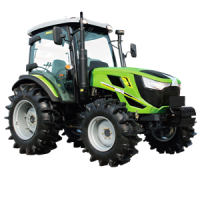
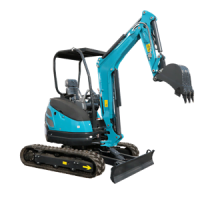
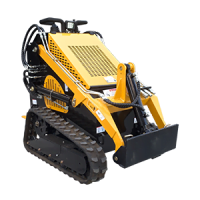
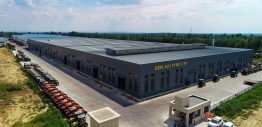
-1.png)